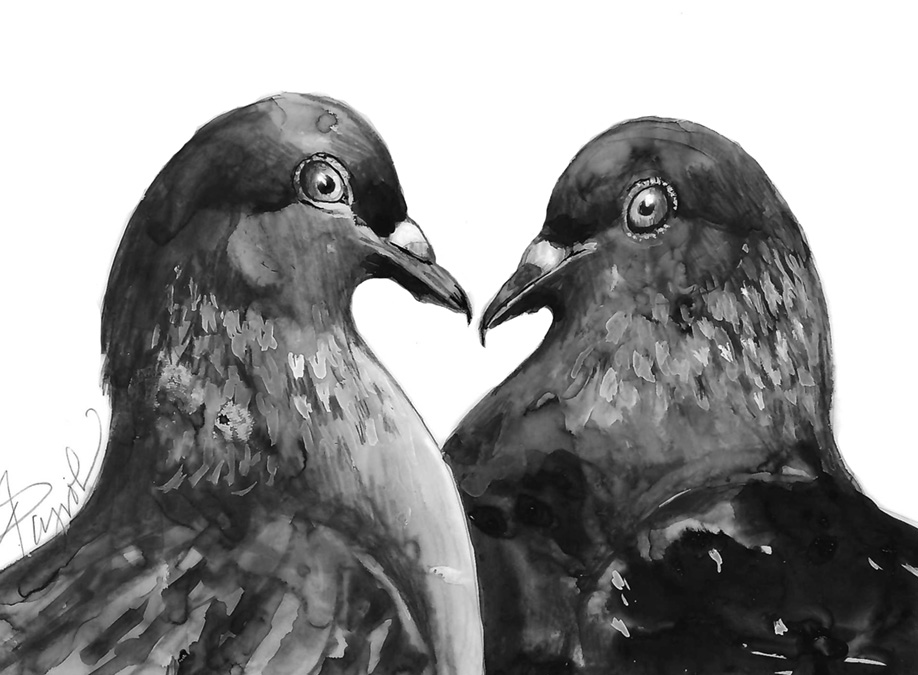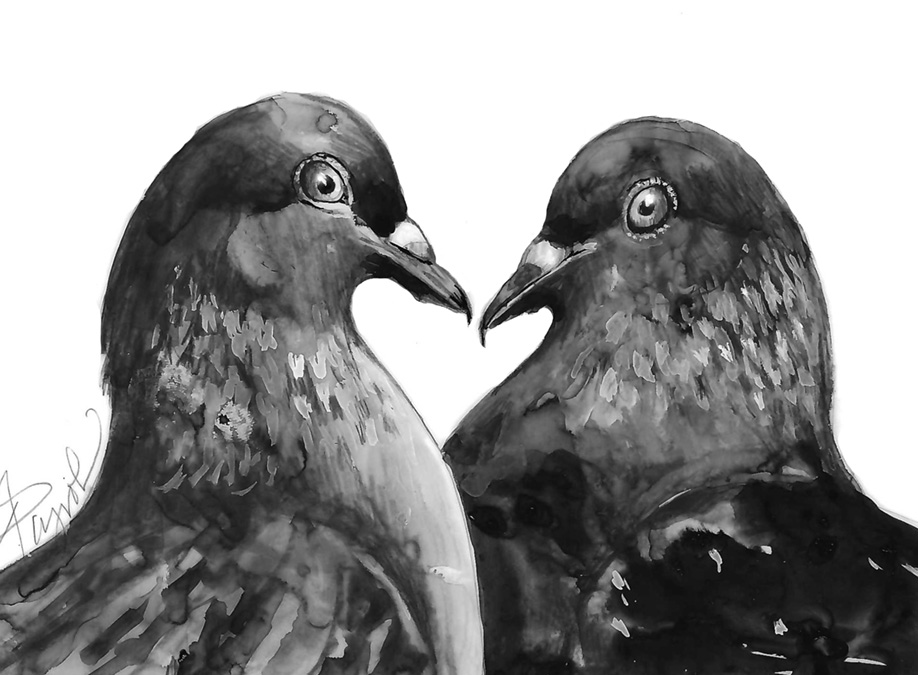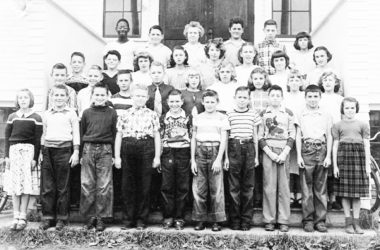
by Anna Morris
QUECHEE — Humans often ascribe traits that we admire to other animals. We treasure a dog’s loyalty, revere an eagle’s power, and applaud a dolphin’s intellect. We hold these creatures in high esteem, whether they are spotted rarely in the wild or are daily lounging at our feet, because we value these same attributes in ourselves. I’d like to add another candidate to this list of animal virtues: a pigeon’s ardor.
I care for a flock of four rescue pigeons, each of them deemed non-releasable after being brought injured to the Vermont Institute of Natural Science’s Center for Wild Bird Rehabilitation. Bennington, Springfield, Simon, and Garfunkel now live protected in a sheltered enclosure, tossed together by their various misfortunes. While it is easy to feel sympathy for an injured animal of any kind, I am often surprised that the same person who rescued the bird may tell me, somewhat embarrassed, “It’s just a pigeon.”
It’s true that pigeons are not rare. Today, Columba livia, the rock pigeon, is one of the most widely distributed birds on the planet. Pigeons evolved to nest on rocky sea cliffs in southern Europe and the Middle East, and humans domesticated these birds nearly 10,000 years ago, long before keeping chickens. People have valued pigeons for their meat, as messengers, or as companion animals, and have bred more than 1,000 different colors and varieties of the species. Most importantly, people took their pigeons with them wherever they went, and today the global population, a combination of the original rock pigeons and escaped domestics from the past ten millennia, is around 120 million individuals.
But to be common in number and common in personality are two very different things. Simon, the only female in my pigeon flock, is the object of Bennington’s constant affections. I have watched him run his beak gently through the hard-to-reach feathers on the back of her neck for hours on a sunny winter morning. Though she cannot return the favor (she has a badly misaligned beak) she follows at his heels and keeps the other pigeons out of the best nesting box. Pigeons are monogamous, keeping one partner for life. They continuously reaffirm their connections; even in January Bennington dances for his mate, puffing out the feathers around his neck, inflating air sacs in his throat, and cooing and strutting in front of her.
Though Simon has yet to lay eggs, pigeons can breed nearly year-round, even during more mild New England winters. This ability is granted to them by a unique adaptation called crop milk. When the young pigeons (or squabs) hatch, their parents feed them a white, protein-rich substance secreted directly from the walls of the crop until the squabs can digest seeds on their own. This milk can be produced at any time of year, allowing pigeons to raise their young on a nutritious diet even while seeds are scarce. Both the male and female produce this milk, sharing feeding and incubation duties as well.
The devotion that pigeons have to their partners and young was used to create one of the most unique breeds of any domesticated animal: the homing pigeon. Homing pigeons are another domesticated breed of Columba livia; these heroes are the same species as the birds you’re likely to come across in city parks. Throughout both world wars, homing pigeons were used to get messages quickly from soldiers in the field to their officers back at base.
Because pigeons have both an incredible natural sense of direction and a desperate dedication to their families, they will fly through darkness, storms, and falling bombs to get back to a waiting mate. Pigeons often traveled in aircraft with Royal Air Force bomber crews during WWII. One pigeon, Winkie, saved the entire crew of a crashed bomber by flying 120 miles in less than two hours to her home coop in Scotland, where her owner contacted RAF officials, activating a rescue mission. Doubtless she was unaware of her heroic act and was grateful to be safe with her partner again, but not nearly as grateful as the rescued crew of the bomber.
Sometimes, the traits we see in animals are less flattering than those afforded to the eagles and dolphins of the world, and usually pigeons get a bad rap. I like to remember that they are simply living their lives alongside us, because our skyscrapers remind them of sea cliffs, our food is abundant and sometimes unattended, and we all want to settle down in a safe place with someone we love.
[Anna Morris is an environmental educator at the Vermont Institute of Natural Science. Illustration by Adelaide Murphy Tyrol.]






